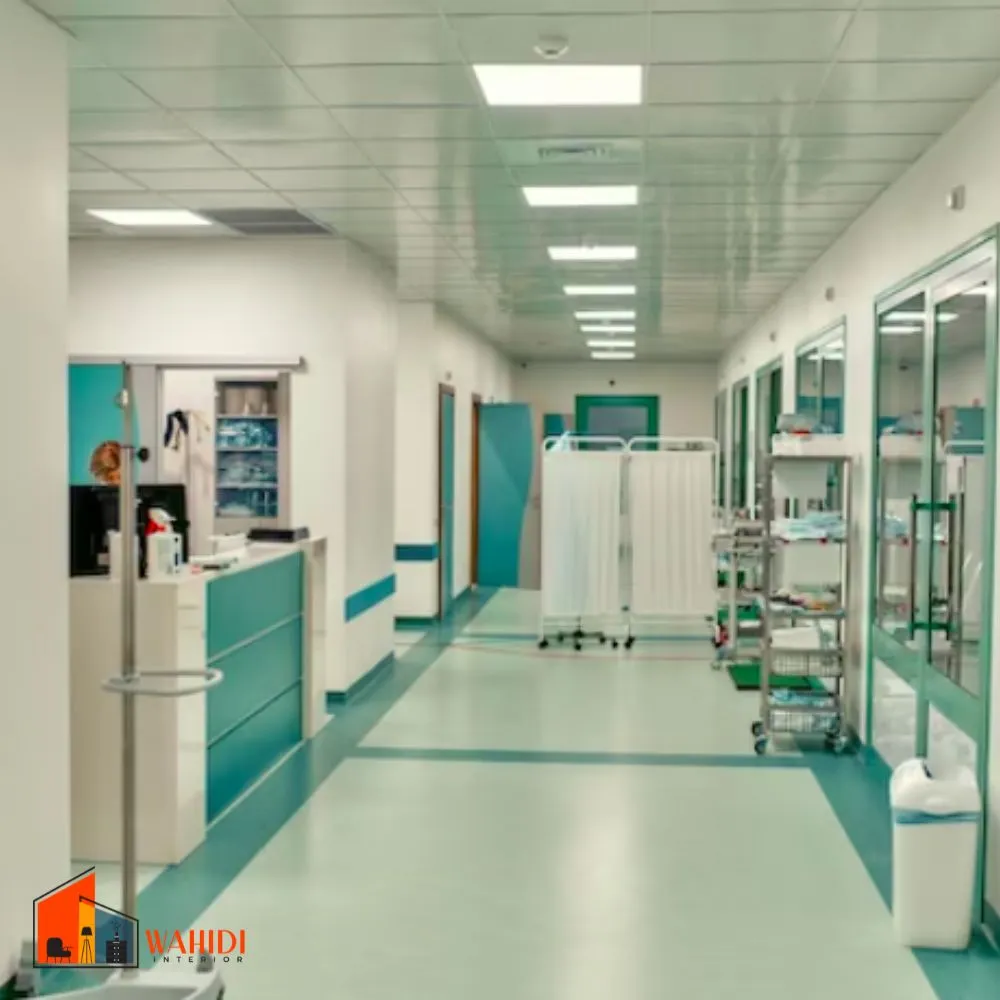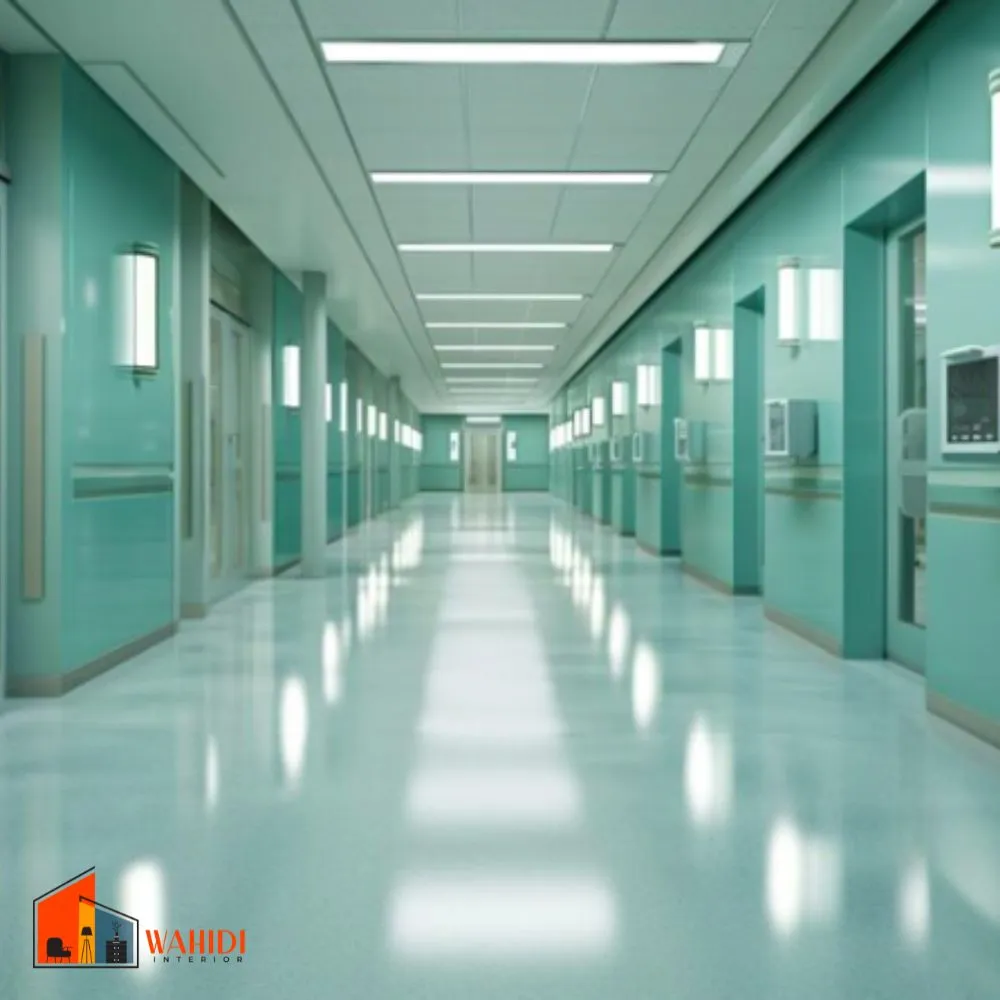Hospital flooring is not just about aesthetics but also about functionality and safety. It must be able to withstand heavy foot traffic, spills, and other hazards that are common in healthcare environments. At Wahidi Interior, we provide hospital flooring solutions that are designed to meet these requirements while also being eco-friendly, affordable, and easy to maintain.
At Wahidi Interior, we understand the importance of sustainability in hospital design and construction. That’s why we offer eco-friendly hospital flooring solutions that are made from sustainable materials like recycled plastic and natural stone. Our hospital flooring solutions are not only durable and functional but also environmentally responsible, which aligns with the UAE’s sustainability goals.
By entering data fields and press submit button to get details of our collection of Hospital Flooring in Dubai and UAE

Vinyl flooring is a popular choice for hospitals due to its durability, ease of maintenance, and affordability. It is available in a wide range of colors, patterns, and textures that can enhance the aesthetic appeal of hospital spaces while also providing excellent slip resistance and hygiene properties.
Stone flooring is a natural choice for hospitals due to its hygiene properties and durability. It is resistant to moisture, bacteria, and other contaminants, making it an excellent choice for high-traffic areas like operating rooms and patient rooms.
Epoxy flooring is a durable and versatile material that can be customized to suit the specific needs of healthcare facilities. It is available in a wide range of colors, patterns, and textures that can enhance the aesthetic appeal of hospital spaces while also providing excellent slip resistance and hygiene properties.
Rubber flooring is a popular choice for hospitals due to its slip resistance, comfort underfoot, and ability to absorb noise. It is available in a wide range of colors and textures that can enhance the aesthetic appeal of hospital spaces while also providing excellent hygiene properties.

Investing in high-quality hospital flooring is crucial for creating a secure, hygienic, and comfortable environment for patients, healthcare workers, and visitors in Dubai and the UAE. These flooring solutions provide numerous advantages, such as enhanced hygiene and infection control, increased durability and longevity, improved safety and slip resistance, greater comfort and well-being for patients and healthcare workers, and enhanced aesthetics and visual appeal. By selecting quality hospital flooring solutions, healthcare facilities can promote healing, reduce maintenance and replacement costs, and enhance the overall patient experience.
At Wahidi Interior, we offer a wide range of top-notch hospital flooring options that cater to the unique requirements of healthcare facilities in Dubai and the UAE. Our team of experienced professionals can assist you in selecting the right hospital flooring solution based on factors such as hygiene, durability, safety, comfort, aesthetics, traffic patterns, maintenance requirements, and cost.
Hospital flooring refers to the type of flooring used in healthcare facilities, such as hospitals, clinics, and medical centers. It is designed to meet specific requirements related to hygiene, safety, durability, comfort, and aesthetics.
Hospital flooring is crucial because it plays a significant role in creating a safe, hygienic, and comfortable environment for patients, healthcare workers, and visitors. It helps prevent the spread of infections, reduces the risk of slips and falls, and enhances the overall patient experience.
Common materials used for hospital flooring include vinyl, linoleum, rubber, and epoxy resin. Each material has its own unique properties that make it suitable for different areas of the hospital.
Hospital flooring can help prevent the spread of infections by being easy to clean and disinfect. Some materials also have antimicrobial properties that inhibit the growth of bacteria and viruses.
Hospital flooring can improve patient safety by providing slip-resistant surfaces that reduce the risk of falls. It can also help prevent injuries from falling medical equipment or objects by providing shock-absorbing surfaces.